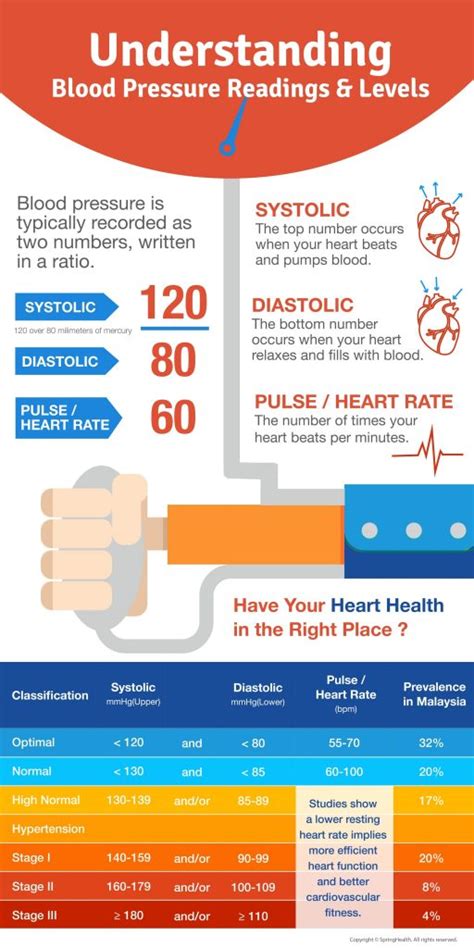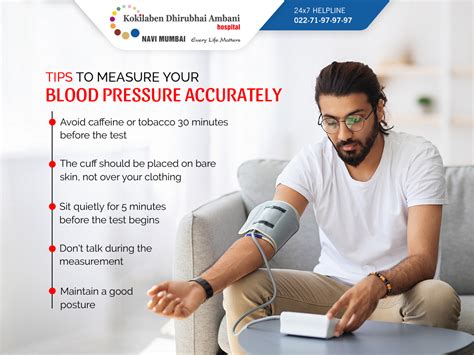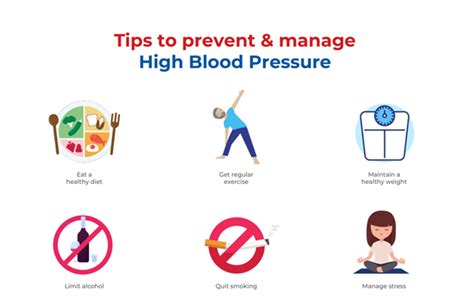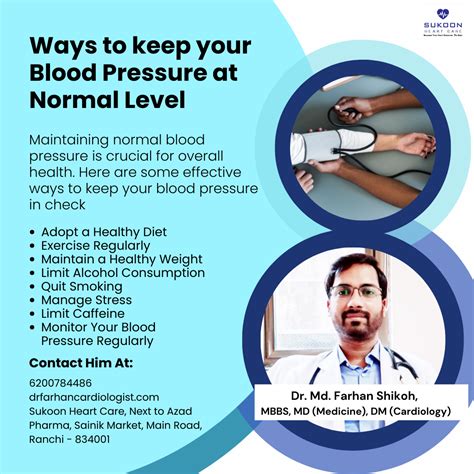Intro
Learn about normal blood pressure readings, hypertension, and hypotension with our comprehensive guide, covering systolic, diastolic, and pulse pressure to help you understand healthy blood pressure ranges and manage cardiovascular health effectively.
Maintaining a healthy blood pressure is crucial for overall well-being, as it plays a significant role in preventing cardiovascular diseases, strokes, and kidney damage. Blood pressure readings are a vital indicator of our health, and understanding what the numbers mean can help us make informed decisions about our lifestyle and medical care. With the increasing prevalence of hypertension worldwide, it's essential to have a comprehensive guide to normal blood pressure readings. In this article, we'll delve into the world of blood pressure, exploring its importance, how it's measured, and what the readings mean.
Blood pressure is the force exerted by blood against the walls of arteries as it circulates throughout the body. It's a vital function that supplies oxygen and nutrients to our organs and tissues. When blood pressure is too high, it can lead to damage in the blood vessels, heart, and kidneys, increasing the risk of cardiovascular diseases. On the other hand, low blood pressure can cause dizziness, fainting, and inadequate blood flow to vital organs. Therefore, it's crucial to maintain a normal blood pressure reading to ensure optimal health.
The importance of monitoring blood pressure cannot be overstated. Regular check-ups can help identify potential issues before they become severe, allowing for early intervention and treatment. Additionally, understanding blood pressure readings can empower individuals to make lifestyle changes, such as adopting a balanced diet, exercising regularly, and managing stress, to maintain a healthy blood pressure. With the rise of digital blood pressure monitors and mobile health apps, tracking blood pressure has become more accessible and convenient than ever. In this article, we'll provide an in-depth guide to normal blood pressure readings, helping you understand the numbers and take control of your health.
Understanding Blood Pressure Readings

Blood pressure readings are typically expressed as two numbers: systolic and diastolic. The systolic number represents the pressure in the arteries when the heart beats, while the diastolic number represents the pressure between beats. A normal blood pressure reading is usually around 120/80 mmHg, but it can vary slightly depending on factors such as age, sex, and overall health. The American Heart Association (AHA) provides guidelines for blood pressure categories, which include:
- Normal blood pressure: Less than 120/80 mmHg
- Elevated blood pressure: 120-129/80 mmHg
- Stage 1 hypertension: 130-139/80-89 mmHg
- Stage 2 hypertension: 140 or higher/90 or higher mmHg
Factors Affecting Blood Pressure Readings
Several factors can influence blood pressure readings, including: * Age: Blood pressure tends to increase with age * Sex: Men typically have higher blood pressure than women * Weight: Excess weight can increase blood pressure * Diet: Consuming high amounts of sodium, sugar, and saturated fats can raise blood pressure * Physical activity: Regular exercise can help lower blood pressure * Stress: Chronic stress can contribute to high blood pressureMeasuring Blood Pressure

Measuring blood pressure is a straightforward process that can be done at home or in a medical setting. There are two main types of blood pressure monitors: manual and digital. Manual monitors require a stethoscope and a cuff, while digital monitors are automated and provide instant readings. When taking blood pressure readings, it's essential to follow these guidelines:
- Sit comfortably with your back supported and feet flat on the floor
- Rest your arm on a flat surface, with your palm facing upwards
- Ensure the cuff is at the same level as your heart
- Take multiple readings, spaced at least one minute apart
- Avoid smoking, exercising, or consuming caffeine at least 30 minutes before taking readings
Tips for Accurate Blood Pressure Readings
To ensure accurate blood pressure readings, follow these tips: * Use a high-quality blood pressure monitor that has been calibrated and validated * Take readings at the same time every day, ideally in the morning and evening * Avoid taking readings during times of stress or anxiety * Keep a record of your readings to track changes and patternsManaging High Blood Pressure

If you've been diagnosed with high blood pressure, there are several lifestyle changes and medical treatments that can help manage the condition. Some of these include:
- Adopting a balanced diet that is low in sodium, sugar, and saturated fats
- Engaging in regular physical activity, such as walking or swimming
- Maintaining a healthy weight through a combination of diet and exercise
- Reducing stress through techniques such as meditation or deep breathing
- Taking medication as prescribed by your healthcare provider
Lifestyle Changes for Healthy Blood Pressure
Making lifestyle changes can have a significant impact on blood pressure. Some of the most effective changes include: * Increasing potassium intake through foods such as bananas, leafy greens, and sweet potatoes * Reducing sodium intake by limiting processed and packaged foods * Getting enough sleep, aiming for 7-8 hours per night * Quitting smoking and limiting alcohol consumption * Practicing stress-reducing techniques, such as yoga or tai chiMaintaining a Healthy Blood Pressure

Maintaining a healthy blood pressure requires ongoing effort and commitment. By understanding the factors that affect blood pressure, making lifestyle changes, and monitoring readings regularly, individuals can reduce their risk of cardiovascular disease and maintain optimal health. Additionally, working with a healthcare provider to develop a personalized treatment plan can help manage high blood pressure and prevent complications.
Benefits of Healthy Blood Pressure
Maintaining a healthy blood pressure has numerous benefits, including: * Reduced risk of cardiovascular disease and stroke * Lower risk of kidney damage and disease * Improved cognitive function and reduced risk of dementia * Enhanced overall health and well-being * Increased energy and vitalityConclusion and Next Steps

In conclusion, maintaining a normal blood pressure reading is crucial for overall health and well-being. By understanding the factors that affect blood pressure, making lifestyle changes, and monitoring readings regularly, individuals can reduce their risk of cardiovascular disease and maintain optimal health. If you're concerned about your blood pressure or have questions about managing high blood pressure, consult with your healthcare provider to develop a personalized treatment plan.
What is the ideal blood pressure reading?
+The ideal blood pressure reading is typically around 120/80 mmHg, but it can vary slightly depending on factors such as age, sex, and overall health.
How often should I take my blood pressure?
+It's recommended to take your blood pressure at least twice a day, ideally in the morning and evening, and at the same time every day.
What are the risks of high blood pressure?
+High blood pressure can increase the risk of cardiovascular disease, stroke, kidney damage, and other complications if left untreated.
We hope this comprehensive guide to normal blood pressure readings has been informative and helpful. If you have any questions or concerns, please don't hesitate to reach out to your healthcare provider. Share this article with friends and family to help spread awareness about the importance of blood pressure management. Together, we can work towards maintaining healthy blood pressure and reducing the risk of cardiovascular disease.
